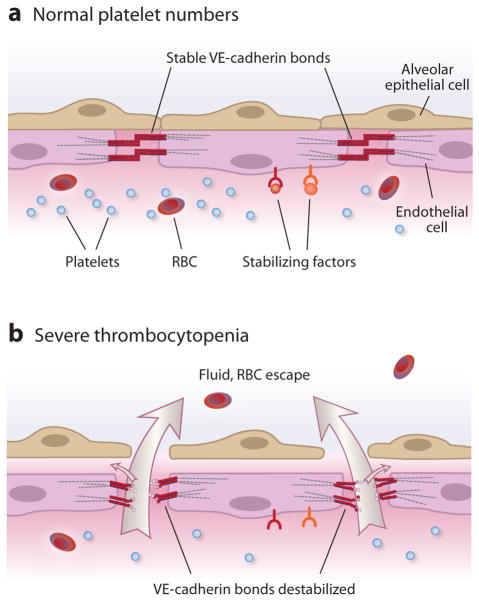Figure 4.
Platelets stabilize pulmonary vascular endothelial barriers. (a) Under basal conditions, platelets express and/or release stabilizing factors that interact with receptors on alveolar capillary endothelial cells. Sphingosine-1-phosphate is a prototype stabilizing factor. Receptors for stabilizing factors are linked to intracellular signaling pathways that regulate cytoskeletal interactions, adherens junction assembly, and basal endothelial barrier properties. Homophilic binding of vascular endothelial cell cadherin (VE-cadherin) is central to stable alveolar capillary endothelial barrier function (reviewed in References 82 and 83). (b) Animal models show that in severe thrombocytopenia, basal alveolar capillary endothelial barrier function is disrupted, leading to increased permeability and transvascular escape of water, solutes, and red blood cells (RBC) (reviewed in Reference 64). Large arrows denote fluid exiting to the alveolar space, and small arrows denote fluid exiting to the interstitial space and to the lymph.

